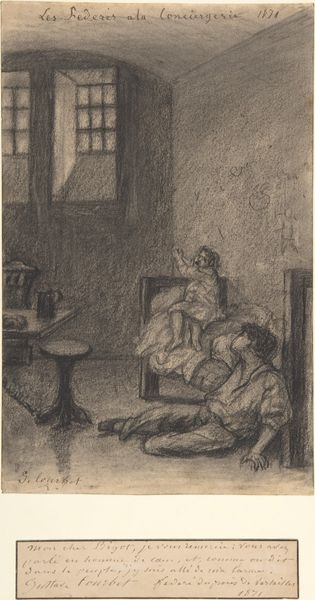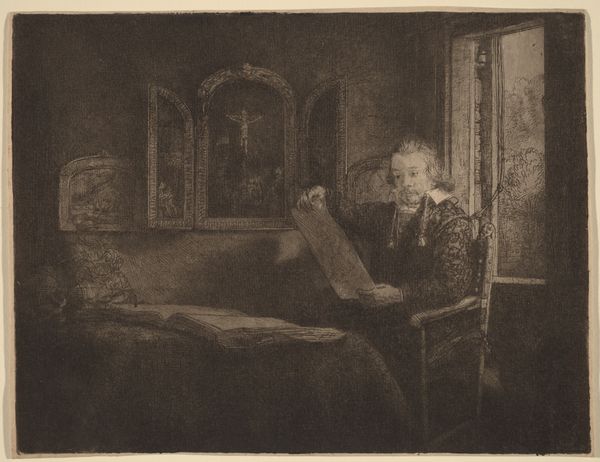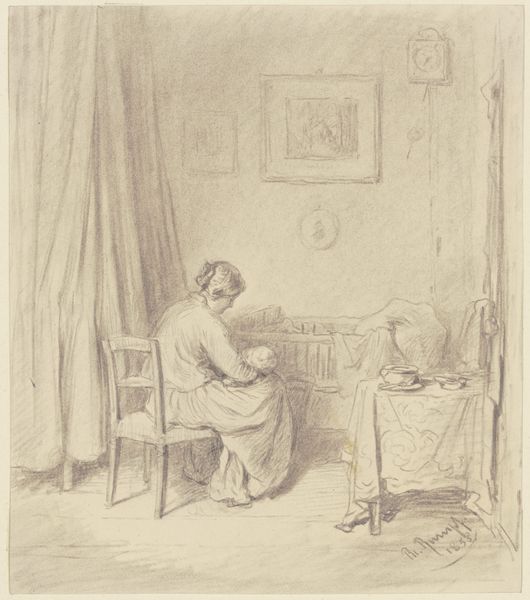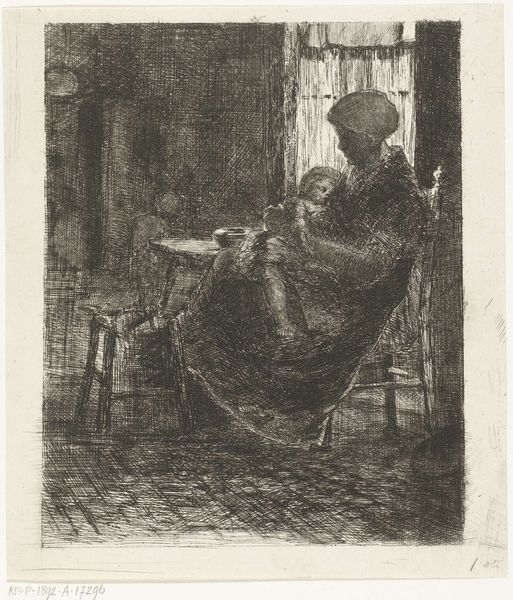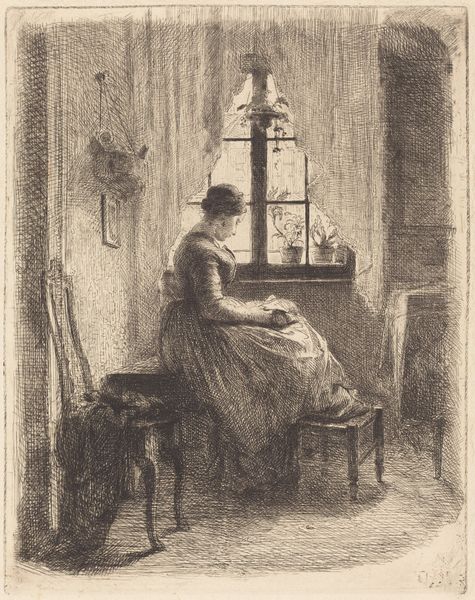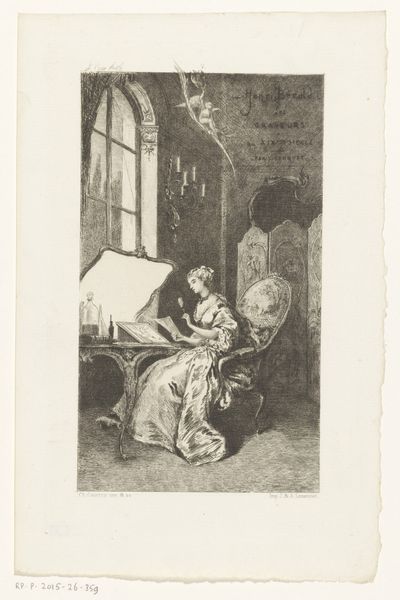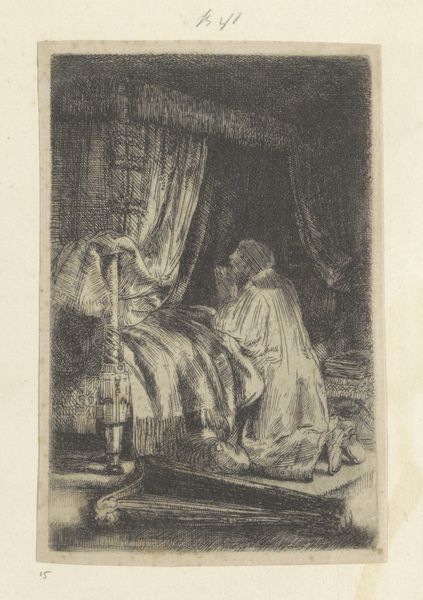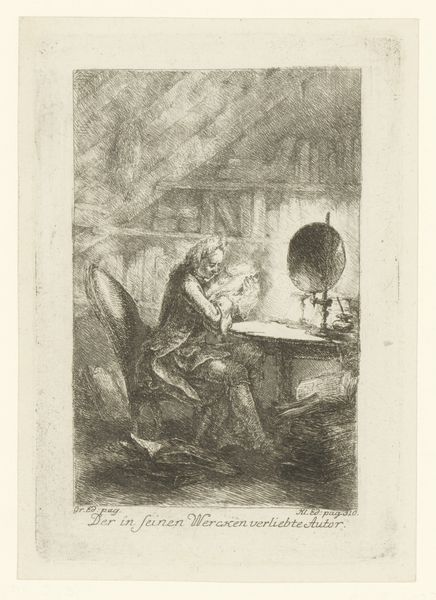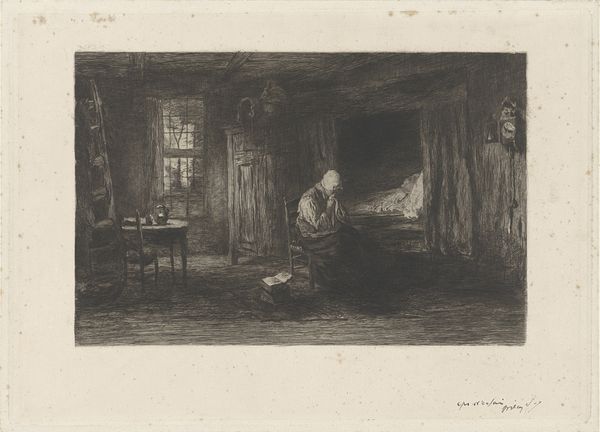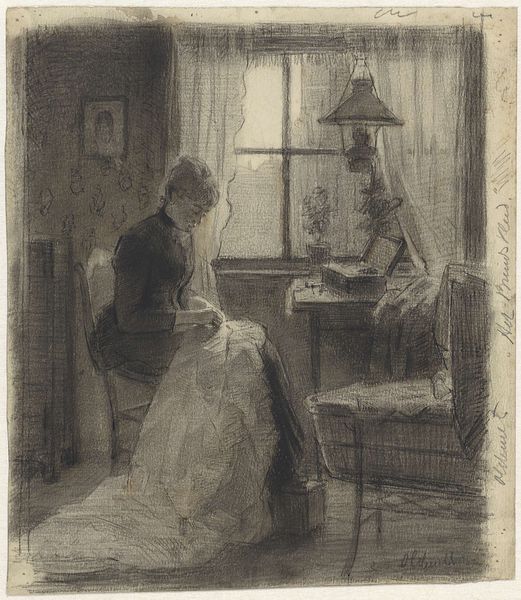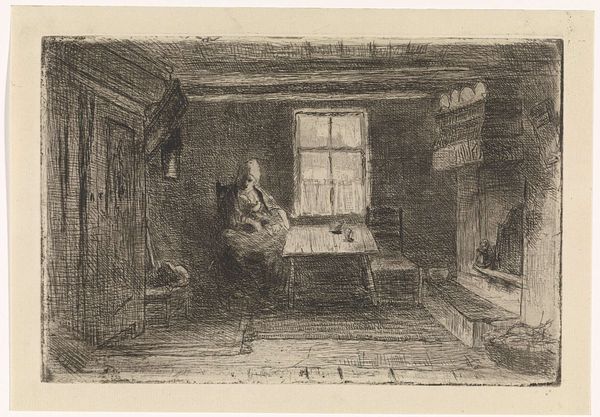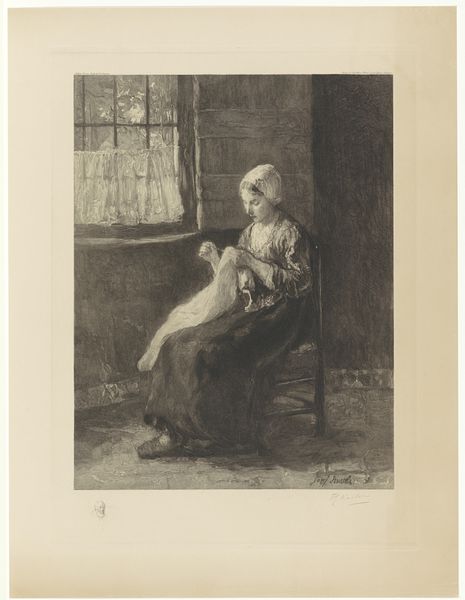
drawing, print, etching
#
portrait
#
drawing
# print
#
etching
#
pencil drawing
#
genre-painting
#
realism
Dimensions: 280 mm (height) x 185 mm (width) (billedmaal)
Curator: Looking at "Ung pige, som bøder et fiskenet", a 1904 etching by John Lübschitz, I’m immediately drawn to the weight of the scene. Editor: The lighting definitely sets a somber mood. It feels very constrained, doesn't it? You almost sense the weight of her labor just looking at it. Curator: Yes, the stark contrast between the dimly lit interior and the bright window really emphasizes the girl's solitary work. The print itself is fascinating – notice the deliberate mark-making of the etching, almost a woven quality that echoes the net she mends. The production here, in some way, mirrors that of mending nets. Editor: It speaks volumes about the economic realities facing women in coastal communities at the turn of the century. These genre scenes often highlight the labor involved and how the division of labor functioned along gender lines. And note how such images are circulated to tell the history of those communities and their dependence on labor. Curator: Absolutely, the netting, as an object of her labor, has a texture and physical presence – the meticulous craft of mending becomes very clear. The medium itself mirrors her action, doesn’t it? Consider also the potential of material exchange– this image produced for circulation outside her world. Editor: What is also interesting is how the placement of the window behind the young woman elevates this humble interior to a more spiritual realm. It is almost like a halo that surrounds her. Curator: I agree; the bright window seems to draw your gaze towards it in the picture. She is captured inside this constructed moment, doing repetitive manual labor– which perhaps gives the window behind her greater symbolic weight. She labors, captured, a subject of this scene. Editor: We see similar imagery becoming popular across Europe at the same time. Such art was meant to represent the 'real' everyday person. However, the question still lingers: Who defines such realities? Curator: It is definitely a crucial question. Examining these works closely reveals the choices embedded in representing such ‘realities’. Thanks for shedding light on its many different interpretations. Editor: Of course! Art always invites ongoing dialogue with the public. Hopefully, our brief chat can start just that.
Comments
No comments
Be the first to comment and join the conversation on the ultimate creative platform.

